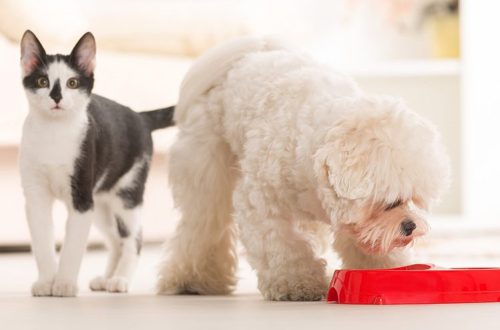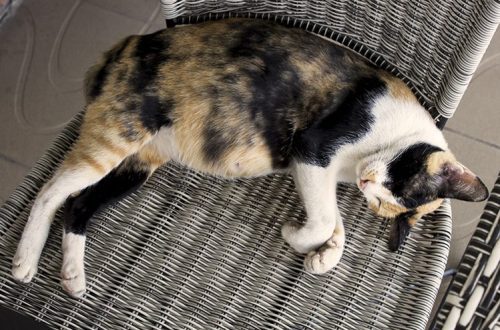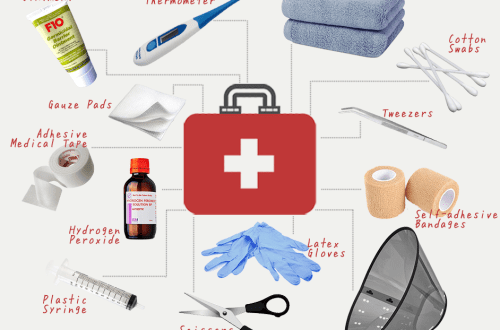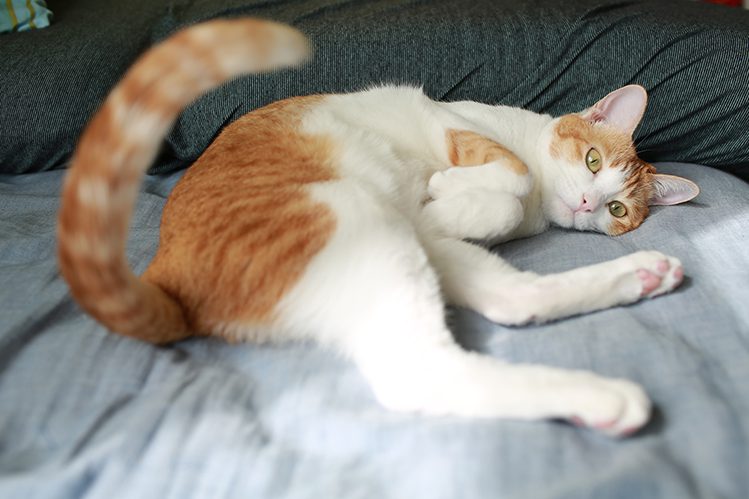
Cat’s greasy tail: what to do?
If you are reading this article, then you are familiar with the “greasy tail syndrome” firsthand. What to do if the cat’s tail is greasy all the time? It seems that you have already tried all the shampoos and wash your cat more often than not, but the problem has not gone away. So why do fat patches form on the tail and how to deal with it?
The coat of cats and cats on the tail can be greasy almost all the time. Sometimes one or more fat spots appear on the tail, and sometimes the tail becomes completely “fat”. The degree of “greasiness” can be different. In some cats, the coat becomes oily only at the base, in others – to the very tip. Frequent bathing and washing with degreasers usually do not help. After a short time, the tail becomes “greasy” again.
This problem is called “fatty tail syndrome”.

Cats have sebaceous glands on their tails. They produce sebum, which moisturizes and protects the skin. Sometimes the sebaceous gland produces too much secretion – in such cases, oily spots appear on the tail or it becomes completely “dirty”.
The reasons for the increased production of sebum have not yet been sufficiently studied, but veterinarians associate them with the pet’s hormonal background, an unbalanced diet and lifestyle in general. Most often, uncastrated cats face the “greasy tail syndrome”. As well as pets that are kept in adverse, stressful conditions, for example, in cages in a shelter.
A greasy tail is not life-threatening and usually does not affect the pet’s well-being. This problem is considered cosmetic. Owners are concerned about the unkempt appearance of the cat, and they try to wash the tail so that the coat becomes beautiful again.
However, the problem should not be underestimated. Due to the increased production of sebum, black crusts, comedones (whiteheads and blackheads) and even boils can form on the tail. The skin can become irritated and injured. There is a risk of bacterial and fungal infection, severe dermatitis may form with accompanying itching and flaking. Therefore, it is not worth doing nothing. The condition of the coat needs to be put in order. But how to do that?
When the owner sees a cat with a greasy tail, he decides to wash the pet – and this desire is completely understandable. After washing, the hair on the tail may look fresh and clean. But a little time passes – and the tail becomes even fatter than it was before. What to do? Wash again?
Frequent washing and the use of aggressive degreasers is a common mistake that owners make. The more often the tail gets dirty, the more often they try to wash it off and the more diligently they experiment with shampoos: what if this one finally helps? But how does the sebaceous gland behave in this case? She begins to produce even more sebum.
When you wash off all the protection (fat) from the skin, the sebaceous glands begin to produce a secret even more intensively to make up for the loss and restore protection. As a result, the tail becomes even more “dirty”. The more often you wash the cat and the more aggressive products you use, the faster the tail becomes fat again.
But that doesn’t mean bathing can’t solve the problem. Maybe and how. You just need to bathe properly.
For starters, don’t try to solve the problem in one go: it’s impossible. It takes time to normalize the work of the sebaceous glands. The principle of “like like like” works here, i.e. fat must be washed off with grease. Use not degreasing agents, but, on the contrary, the most moisturizing conditioners, masks and oils. The skin, which will be well moisturized from the outside, will eventually stop producing excess secretions.
It is better to focus on professional care products: this is not an excess, but a necessary measure for the health and beauty of the coat. Never wash your cat with soap, your own or baby shampoo, or any other means that are not intended for a cat. This will only exacerbate the problem, and in addition, it can result in severe allergies, dandruff and itching.
A good groomer will help you choose the most effective means specifically for your case. Don’t hesitate to make an appointment. A consultation with a good master will save you a lot of time and money that you would have spent on buying and testing a variety of shampoos and sprays.
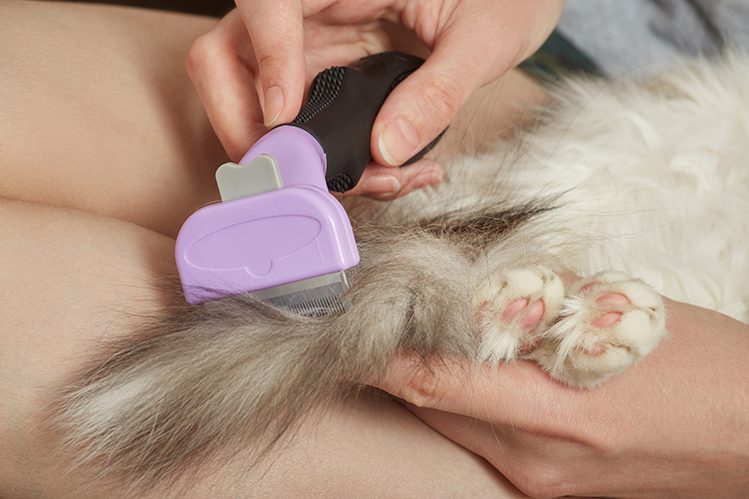
What to do besides proper bathing?
The main thing is to consult with a veterinarian. It is better to exclude possible health problems that may affect the appearance of the cat, or to identify them in a timely manner.
Your other steps are to review the diet and conditions of detention in general. Increased production of skin secretions may be due to feeding errors (for example, if you feed a cat with fatty meat), lack of vitamins and minerals in the body, hormonal disorders or stress. All this is best discussed with a veterinarian.
We wish your pets the most beautiful ponytails!



